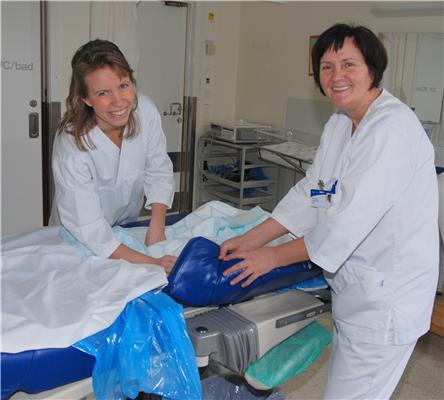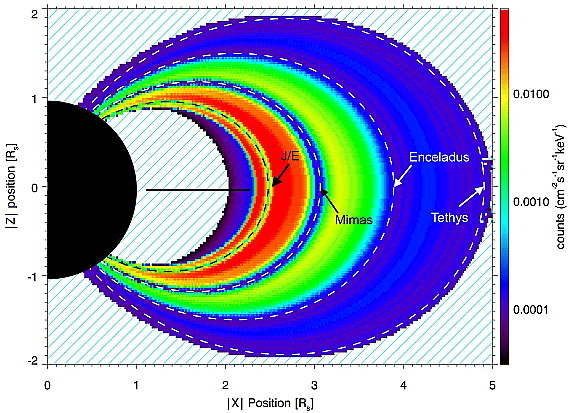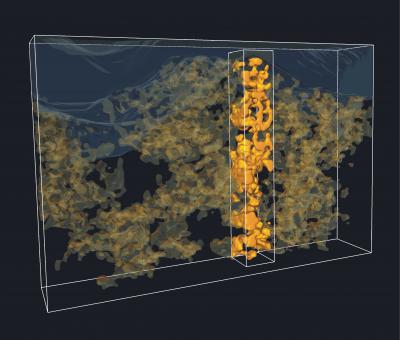Contrary to short-term consensus beliefs, El Niño has not been getting stronger because of global warming, says Benjamin Giese, a professor of oceanography at Texas A&M who specializes in ocean modeling, but he found a link between El Niño and the severe flu pandemic 91 years ago.
Coincidence? The 1918 El Niño was apparently one of the strongest of the 20th century but how is it relevant to flu?
Astrid Skreosen worked for many years as an auxiliary nurse in the maternity ward in Skien Hospital and became fed up with the little mats which were supposed to lie under women who were giving birth that were intended to soak up waste products and fluids so she began to look into the possibility of producing a specially modified super-absorbent bed sheet.
After stumbling around in the dark for a while with inventors’ consultants and patent offices, she rang SINTEF (Skandinavias største uavhengige forskningsorganisasjon) Materials and Chemistry and spoke with Per Stenstad.
An international team of researchers say they have discovered a blueprint for a general understanding of the evolution of the "machinery" of our cells providing more evidence, at the molecular level, in support of one of the key tenets of Darwin's Theory of Evolution.
A non-Darwinian explanation, from believers of Intelligent Design, proposed these complex machines to be "irreducibly complex". In other words they are so neatly complex and complete that they couldn't have evolved but rather must have been designed by an intelligent entity.
The Cassini spacecraft's Magnetospheric Imaging instrument (MIMI) has detected a temporary radiation belt around Dione, one of the moons of Saturn. The discovery will be presented at the European Planetary Science Congress in Potsdam by Dr Elias Roussos on Monday, September 14th.
Radiation belts, like Earth’s Van Allen belts, have been discovered at Jupiter, Saturn, Uranus and Neptune but it has only been possible to observe the variability of their intensity at Earth and Jupiter. Cassini has been orbiting Saturn for more than five years so it has been possible to assess changes in Saturn’s radiation belts.
Polymer solar cells don't have the high efficiencies of the silicon kind yet, which isn't saying much, but they can be printed in roll-to-roll processes and at very high speeds so in time the technology could be very cost-effective. Polymer solar cells are also flexible and lightweight so they could be used on vehicles or clothing or to be incorporated in the design of objects.
Researchers from the Eindhoven University of Technology and the University of Ulm have made the first high-resolution 3D images of the inside of a polymer solar cell, giving them new insights in the nanoscale structure of polymer solar cells and its effect on the performance.
You may know that correlation studies have shown that the risk of becoming obese is 2.5 times higher for those who have double copies of the best known risk gene for being overweight or obese, the FTO gene (fat mass and obesity associated).
New discoveries of that sort have led to a resurgence in concern that we may be slaves to our genes, but is that the case? No, in every study obesity still required high calorie consumption, especially fat. A low fat diet neutralizes the harmful effects of the gene.
 Study: Caloric Restriction In Humans And Aging
Study: Caloric Restriction In Humans And Aging Science Podcast Or Perish?
Science Podcast Or Perish? Type 2 Diabetes Medication Tirzepatide May Help Obese Type 1 Diabetics Also
Type 2 Diabetes Medication Tirzepatide May Help Obese Type 1 Diabetics Also Life May Be Found In Sea Spray Of Moons Orbiting Saturn Or Jupiter Next Year
Life May Be Found In Sea Spray Of Moons Orbiting Saturn Or Jupiter Next Year









